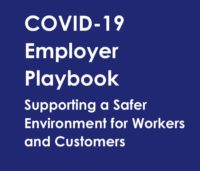The cannabis retail market is very unique. What began as compassion clubs and wellness centers in the early days of legal cannabis, eventually morphed into dispensaries, quickly becoming the retail model that regulators around the country adopted and businesses implemented.
For most states with legal cannabis markets, the dispensary has been the only way for consumers to buy cannabis and cannabis products. Before the pandemic began, we started seeing a handful of states warm up to allowing delivery services. During the height of the pandemic, more states adopted curbside pickup, e-commerce in some shape or form and delivery services that finally expanded cannabis retail beyond the dispensary. Still though, regulations hamper commercial growth in the retail space and the dispensary remains, by far, the place where most people buy their cannabis.

When Jack Roosevelt, co-founder of LucidaClub, entered a dispensary back in 2019 in Massachusetts, he shared an experience all too common in the cannabis industry: An overwhelming number of options, jargon like sativa, indica and strain names that make no sense to the uninitiated, confusing product types and an all-around unpleasant shopping experience. Jack saw all those barriers to entry for the canna-curious or novice consumer and thought that there must be a better way to shop for cannabis.
So he started LucidaClub, a membership-based platform that is designed to guide and educate consumers with the advice of experts who can help people understand cannabis products and make the right purchase decision without all of the frustration and trial and error that is so common.
The name, Lucida, comes from a Latin phrase meaning the brightest star in a constellation. Jack and his co-founder, Lucinda, want their company to be the guiding star on your cannabis journey. LucidaClub isn’t just for the cannabis newbie; their in-house curator and team of experts can help any cannabis consumer find products to better fit their needs for sleep, wellness, relaxation, stress or just to have a good time. We sat down with Jack to chat about the cannabis retail market, what his company is all about and what the future of cannabis retail might look like.Jack Roosevelt will be speaking on the cannabis retail experience at the Cannabis Quality Conference & Expo. Click here to learn more.
Cannabis Industry Journal: Tell us about your background and how you came to the cannabis space.
Jack Roosevelt: I began my career in finance, working for JP Morgan and Barclays. I left Barclays and joined a renewable energy start up before eventually joining the cannabis space.
My move into the cannabis space was due to an event in the summer of 2019. Adult use cannabis had been legal in Massachusetts since November of 2018. Now, I smoked some weed in high school and college, but hadn’t touched it in at least 20 years. However, cannabis was now legal, so I said maybe there’s an opportunity to find something that would help me unwind at the end of the day, help with sleep and manage some of my stress.
 Knowing that I smoked in high school and college, I figured that buying weed was buying weed. How difficult could this be? That took me to going to a dispensary for the first time. Walking through those doors made me realize that buying cannabis today is nothing like buying weed back when I was in college. It’s a fundamentally different experience.
Knowing that I smoked in high school and college, I figured that buying weed was buying weed. How difficult could this be? That took me to going to a dispensary for the first time. Walking through those doors made me realize that buying cannabis today is nothing like buying weed back when I was in college. It’s a fundamentally different experience.
I stood there looking at the menu of strains, with names that meant nothing to me, jargon like terpenes, and even the idea of sativa versus indica at that time was foreign to me. Twenty years ago, we didn’t pay attention to the strain name or anything like that. We’d walk into someone’s dorm room and your option would be ‘this is twenty bucks an eighth, forty bucks an eighth and sixty bucks an eighth.’ You weren’t paying attention to the strain or the name of anything like that.
Coming into the dispensary that day, I thought I’d walk out of there with an eighth of flower and something to help me unwind at the end of the day. I walked out of there with a tincture and it really wasn’t because they upsold me to a better product, it was because it was the least worst option I could see on the menu. It was something I felt that I could understand from a dosing standpoint and it was something that didn’t require knowing the strains or names that mean nothing to me. I was quite frankly looking for the easiest way to purchase something and get out of there as quickly as possible
Sitting in the car afterwards, I was mulling over that experience, the feeling of intimidation, how awkward it was, how frustrating it was. I am 6’8” and 300 pounds I am not a small guy, and I’m not a wallflower. I don’t intimidate easily, so if this was my experience, what was this going to be like for everyone else?
 That made me reexamine and take a stronger look at the retail market and the potential growth. How do you engage the consumer like me, for whom there are lots of barriers to entry, most of which are perception-driven. Some of the barriers are regulatory and geographic, but most are perception based. Here in Massachusetts, a lot of the dispensaries are in inconvenient locations. Not all towns allow for rec sales, and not all of those towns that do will allow a dispensary to open on the High Street, so consumers often times have to drive out of their way to get to a dispensary.
That made me reexamine and take a stronger look at the retail market and the potential growth. How do you engage the consumer like me, for whom there are lots of barriers to entry, most of which are perception-driven. Some of the barriers are regulatory and geographic, but most are perception based. Here in Massachusetts, a lot of the dispensaries are in inconvenient locations. Not all towns allow for rec sales, and not all of those towns that do will allow a dispensary to open on the High Street, so consumers often times have to drive out of their way to get to a dispensary.
So, for me understanding what this new consumer base would look like and how they would come into the market was key. Obviously there would be a natural growth progression for the cannabis market. However, if we could build something to help guide people, answer their questions and make them feel comfortable with what they were buying and how to consume, really hold their hand in the initial stage of a consumer coming back into the market or coming in for the first time, then we could help grow the market quicker and put that natural progression of growth on a faster track.
That experience made me start to do some market research, look at the market size, and what that potential market could look like. Our research shows that, depending on the maturity of the market in question, there are between 1.5 and 4 times the number of Cannacurious sitting on the sidelines than there are active consumers in a market. Here in MA, conservatively there are at least 1.5MM Cannacurious sitting on the sidelines, waiting to come into the market. Because our research showed such a large opportunity he in MA and the Northeast, where we live, we decided to focus our efforts here.. Because we are Cannacurious consumers ourselves, we have a natural understanding and empathy for the consumer. I was definitely not and still am not an expert on cannabis. But if we can find the right experts that can answer the questions that we have then we can do the same for the Cannacurious. For 70+ years, we’ve been told that cannabis is bad, smoking weed is bad and everything associated with it is bad. So, we want to break that negative perception, that stigma that is still lingering and open it up to a more mainstream consumer.
CIJ: What gave you the idea to start Lucida Club?
Jack: What I just told you sums it up pretty well. It was basically built out of personal frustration. I thought that if I had this problem, those feelings of intimidation, awkwardness and frustration, then undoubtedly a lot of other people would too. Therefore, we’re looking at how we can create a platform that would make the buying process as simple and convenient as possible, while educating the consumers at the same time.
CIJ: How does Lucida Club work?
Jack: It’s a concept of simplicity and convenience. There are two sides to this: The E-commerce side, when you sign up and become a member and you want to make a purchase, all you have to do is answer three questions: What experience do you want? Do you want to smoke something or not? And how much money what do you want to spend? We put together three experience packages with three key price points, around $100, around $150 and around $250.
It is based on available inventory, which products and price points match up with different packages. We have fully integrated with Flowhub and are doing the same thing with some other POS systems as well. We see the inventory for our retail partners on a live basis. When one of our members makes a purchase, if they choose the sleep, nonsmoking, $100 package and put that option in their cart, by the time it populates in their cart, our platform has already gone to the dispensary inventory, we’ve allocated their inventory by experience and by order preference. So it will put those top two or three or four items in the cart automatically. The consumer doesn’t have to worry about what brands are available.
We’ve done all the work for them. They just need to pay attention to what experience and price point they want and we take care of the rest.
 The other side of our business involves our head curator who combs through all the inventories and manages the product selection. But he also works with with our members as a concierge. When you sign up for our service, you automatically get a free consultation with our head curator, which we encourage all of our members to do before they make their first purchase. That way, we can answer all your questions and make sure the package is really tailored towards you individually. You also get a follow up consultation, which helps to guide additional advice and make sure you get the experience you’re looking for. On top of that, we’re also trying to advance consumer education through a lot of content, answering common questions and help to guide consumers on their journey with cannabis and the role it can play in their lives.
The other side of our business involves our head curator who combs through all the inventories and manages the product selection. But he also works with with our members as a concierge. When you sign up for our service, you automatically get a free consultation with our head curator, which we encourage all of our members to do before they make their first purchase. That way, we can answer all your questions and make sure the package is really tailored towards you individually. You also get a follow up consultation, which helps to guide additional advice and make sure you get the experience you’re looking for. On top of that, we’re also trying to advance consumer education through a lot of content, answering common questions and help to guide consumers on their journey with cannabis and the role it can play in their lives.
CIJ: How do you think you are innovating the cannabis retail experience?
Jack: When I was sitting in the car that fateful day back in 2019, I looked at retail the same way everyone else does: you build a store, an e-commerce platform, you have a product you’re trying to sell and focus on the product itself. What opened my eyes being the consumer that day was that cannabis unique.
We’ve been told for decades about how bad cannabis is for us and for society and these negative connotations have been drilled in to us. We need to look at the retail space from the consumer’s perspective and the barriers to entry that they feel. It’s not something that a regular retailer can do easily.
 By definition, a brick-and-mortar retailer, needs to be everything to everybody, for all of their customers. They have to work with the connoisseurs, the regulars that have been consuming for a long time, who really understand what they’re looking for. At the same time, they need to engage with the canna-curious, the newbie that’s walking in the door for the first time. It’s difficult to focus on one market segment for them. If they were to focus all of their efforts on just the canna-curious, they would be missing out and losing traction and not engaging properly with their other customer bases.
By definition, a brick-and-mortar retailer, needs to be everything to everybody, for all of their customers. They have to work with the connoisseurs, the regulars that have been consuming for a long time, who really understand what they’re looking for. At the same time, they need to engage with the canna-curious, the newbie that’s walking in the door for the first time. It’s difficult to focus on one market segment for them. If they were to focus all of their efforts on just the canna-curious, they would be missing out and losing traction and not engaging properly with their other customer bases.
We have the ability to engage with a very specific market segment, the Cannacurious, which is a very large group of people by the numbers but still niche. Our research shows that there are at least 1.5 million Cannacurious in Massachusetts alone that are either sitting on the sidelines or engaging in the market in a very small way. We’ve spoken to a lot of people that have other people make purchases for them, their sister or brother going to a dispensary that feels comfortable picking up a single package of edibles for them. That’s a form of hand holding that we want to provide. We want to make consumers feel comfortable and educate them on how they can choose products for the experience they want.
In my mind when we look at the cannabis space, it’s about how we can help people come into the marketplace, how we can help open their eyes to a litany of other opportunities for them and also how to approach things from a consumer perspective.
CIJ: What do you think the future of retail in cannabis looks like?
Jack: That’s a tough question because so much of that is driven form a regulatory standpoint. I know where I think it would go if regulators were just there to make it easy for consumers and for everyone to do business. It changes so much state to state and market to market. In retail in general, so much is moving online and on to e-commerce. Where you have a situation where people actually understand what they want and they tend to buy the same products on a regular basis, e-commerce is great and easy for them to make a purchase. Delivery opens a lot of doors as well with that. But again, it’s really difficult to look at what is going to happen because the market is so fragmented from a regulatory standpoint.
 It won’t develop in one direction easily. Delivery is an option but we don’t have it on a mass scale in Massachusetts. It’s the same with e-commerce. Technically in Massachusetts, purchasing online is not an easy thing to facilitate. It still has to be done at the point of sale in-person with pickup and it hampers e-commerce. This potentially slows down how the market could develop. I definitely know where it could go, but looking into that magic eight ball will still be very cloudy if you ask it for an answer. Sorry, I have to obfuscate things a little there because it’s just so hard to figure out what the regulators will greenlight next and where they want the market to go.
It won’t develop in one direction easily. Delivery is an option but we don’t have it on a mass scale in Massachusetts. It’s the same with e-commerce. Technically in Massachusetts, purchasing online is not an easy thing to facilitate. It still has to be done at the point of sale in-person with pickup and it hampers e-commerce. This potentially slows down how the market could develop. I definitely know where it could go, but looking into that magic eight ball will still be very cloudy if you ask it for an answer. Sorry, I have to obfuscate things a little there because it’s just so hard to figure out what the regulators will greenlight next and where they want the market to go.
We really just don’t know. There are so many ways to look at that question. If you’re a brick-and-mortar dispensary right now and you’re looking at how the market itself is growing in the state of Massachusetts, it’s tough to say. We went from about sixty licensed retailers during the height of the pandemic to well over 200 now. There’s going to be some consolidation. Whether that means that the growth of MSOs will proliferate and everything will be homogenized going forward, I don’t know what that could mean because at the moment it’s very difficult to have that full homogenization when you’re only allowed to have a handful of retail licenses. How do any of the MSOs gain real traction with three locations? If that changes, if you go somewhere like Florida where the rules are different, you see the true growth of the MSO with dozens of retail locations. Here, we still have a lot of mom-and-pop retailers along with a lot of much smaller MSOs who might have locations in one or two other states.
E-commerce will bring a lot to the market and help brands grow significantly. How we grow depends almost entirely on what the regulatory environment looks like. There are so many different things we could do with our platform, but we are so hampered by the regulations in just this one market alone. We built our platform and business model the way we did because it allows us to be flexible and adapt. As we move into a new market, we can build relationships and new markets open up. It’s all about being flexible if you can be.



















